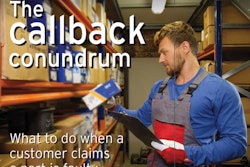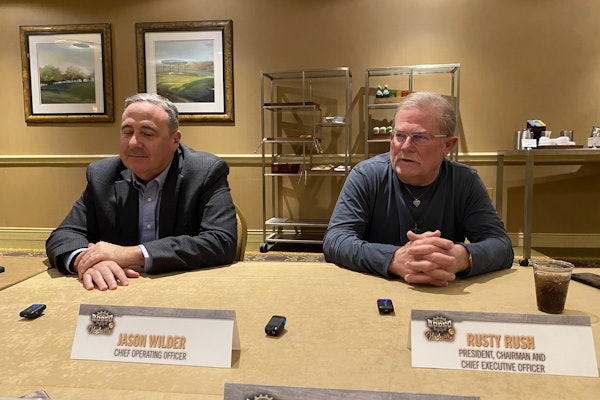By Bill Wade, Wade & Partners
OK, I get it. You’re tired of hearing about Amazon and the end of the world. But please understand it’s hard to ignore a story that introduces an exciting new chapter regularly (this week: Prime Wardrobe). Like all so-called intermediaries, heavy-duty distributors and service suppliers need to deliver a new level of customer experience, not only to defend themselves from new threats, but to win share in more traditional fleet parts and service areas.
This must be a ‘way-different’ approach. Shifts in social norms and Internet dependence demand more creative customer service upgrades, we need to provide a digital customer experience that cuts across mobile and social lines. To stay ahead of quickly-evolving customer needs (suggested by a great new survey by UPS), recognize these facts:
- 80 percent of buyers are willing to switch suppliers for a better website;
- 69 percent of millennial buyers will shift business to a supplier with a mobile app;
- 35 percent of Millennials use social media to research suppliers (vs. 24 percent Gen Xers and 2 percent Baby Boomers).
Distributors also need to think about the experience after the sale, especially returns — 43 percent of buyers expect returns to be a normal post-sales offering. This is especially true for MRO parts buyers who have identified returns as a basic expectation (45 percent of those surveyed).
Make no mistake, traditional distributors face formidable — threats internet sales taxes, labor availability and tariffs being this week’s favorites. As the UPS study warns, as distributors get more comfortable with their e-commerce capabilities, buyers are demanding mobile buying and a host of emerging features.
More Millennials than other age groups expect services that were not historically included in industrial sales. The next generation of buyers is now bringing tech-savvy, non-traditional mindsets to leadership roles.
How about a few ideas to help identify some key opportunities and potential hurdles in leapfrogging these new customer needs/wants/expectations?
Pricing transparency is not optional
The demand for price transparency is absolute. Business-to-consumer (B2C) expectations are driving the need to expose pricing. Our business models have been based on complex, manual pricing processes for years.
But if pricing can be exposed even partially to the customer, distributors can offer easier buying experiences (like online guest checkout) that can be extremely advantageous. Allowing new customers to buy without the need to register creates an enormous opportunity for lead generation. Plus distributors don’t have the problem of protecting their “channel” so they can even expose the pricing and inventories of their most common products.
Online research gurus at Gartner have predicted that almost 40 percent of business-to-business (B2B) digital commerce sites will use price optimization algorithms and dynamic tools (as opposed to manual processes) to calculate product pricing by 2020.
This is actually one change that can drive revenue in a major way. Bringing in opportunities and new customers creates a much warmer lead. Focusing on the post-purchase experience brings them into the fold with strong service and support.
The need for a hybrid heavy-duty hustle
Different roles within the distributor’s commerce ecosystem have varied requirements. A service tech has very different info needs from a procurement manager.
Salespeople have a unique set of responsibilities as well and this may be where most of the disruption occurs. The reality is that due in large part to these multiple roles, we’ll never be 100 percent self-serve within a B2B commerce environment.
We have to start thinking in terms of a hybrid commerce model where salespeople will always be a critical part of the buying process. Most salespeople have become disconnected from the actual commerce experience. Many companies are experiencing adoption rates lower than 5 percent for their new e-commerce solutions. Despite the investment of time and money, customers are simply not accepting the new system.
The goal of a superior B2B buying experience is to increase efficiencies and decrease the cost to serve existing customers, while increasing your share of wallet. A strong B2B sales process may start offline with a field or inside salesperson and then move to an online order. Or, it could start with a service technician who begins an order online, and then needs the direct help of a human CSR.
Don’t invest only in the concept of self-serve; adopting a hybrid model that allows customers to cleanly and easily float between their digital and human interactions should be our industry goal.
Exploding post-purchase expectations
The ordering process is not the only aspect of a complex distribution commerce cycle that’s multi-touch. Post-purchase execution, whether online or offline, is critical for customer satisfaction.
A recent report from Pew Research revealed that more than 70 percent of customers stop doing business with a brand due to a poor support experience. Expectations from B2C are actually driving up the expectations within the B2B cycle as well. Making impacts from this disruptor even more serious.
Keeping the entire commerce cycle connected, including all the roles within that cycle, is key to maintaining those relationships. It’s not just finding and fixing holes in the process either. Focusing on the post-purchase experience can reveal opportunities for enhancing revenue as well.
Mobile. Mobile. Mobile.
Part of the problem with the adoption of new e-commerce sites is that distributors view mobile as simply a responsive website. Although building a native mobile app with high functionality may have been an expensive project in the past, configurable, white label native apps are becoming a bigger part of the mix. With these “off-the-shelf” solutions, native mobile apps are becoming a competitive edge, creating efficiencies for many distributors that never existed before.
End-user and vocation-specific product catalogs, specific pricing and product recommendations, and sophisticated order and re-order capabilities will soon become a requirement. Those that are content with merely providing responsive sites will likely start to lose customers unless they address the need for a mobile experience that provides nearly all the capabilities of the desktop one, like virtually all hot B2C sites.
The Amazon storm and the cloud
I have written about this for the past 18 months, but the strength of the Death Star continues to accelerate. Single sign-on mega-portals are becoming easier to build as cloud-based e-commerce solutions become more and more robust and less expensive.
They provide the unique hybrid requirements of a B2B commerce environment whether it’s during the actual purchase, or post-purchase in terms of support and service.
B2C-like user experiences of these marketplaces are creating enormous competitive value for distributors fighting the growing direct sales mindset of many manufacturers, including:
- Secondary private labels (domestic or import);
- Cross-over industrial and automotive distributors and vehicle dealer groups;
- Expanding interest from ‘broad’ portals and big boxes.
Research backs that up: The 2017 UPS study focused on the industrial buying experience reported that the share of buyers who have purchased from an e-marketplace has more than tripled in the past four years, from 20 percent in 2013 to 75 percent in 2017.
Distributor marketplaces are providing more value to manufacturing clients through data as well. Good marketplaces provide not only a wide span of products, stocked or not, but more data to help accelerate the innovation cycle, as well more opportunities to get closer to the ‘guy who throws the box away.’
Without increasing the value they provide, distributors will lose business to both direct sales for manufacturers and to smarter distributors creating these enhanced mega marketplaces.
Says Amazon Founder and CEO Jeff Bezos: “If you don’t understand the details of your business, you are going to fail.”
Bill Wade is a partner at Wade & Partners and a heavy-duty aftermarket veteran. He is the author of Aftermarket Innovations. He can be reached at [email protected].












